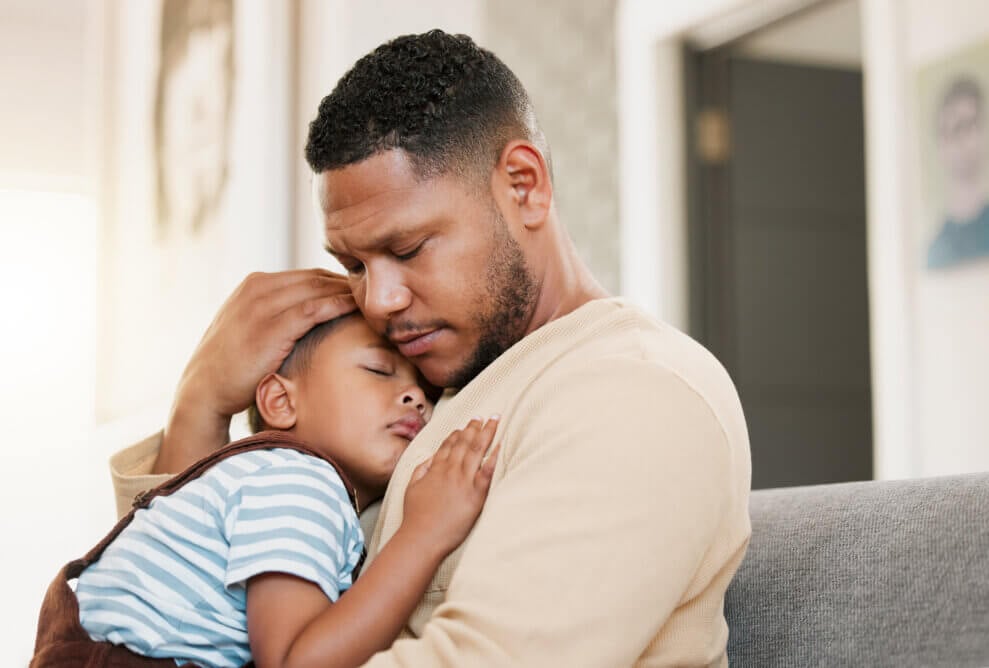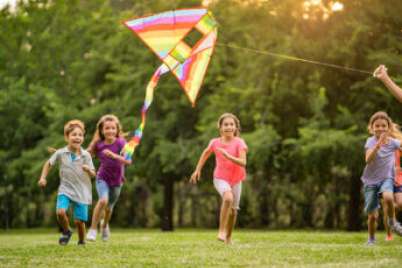
Children’s anxiety and the decline of play
During the COVID-19 pandemic, the increase in anxiety and depression among children and youth was widely reported. Studies in many countries, including Canada and the United States, documented the mental health effects of the pandemic on children and adolescents, as well as adults.
The reasons were easy to identify. School closures, lockdowns, and isolation from friends and community took their toll. One Canadian study specifically pointed to decreased time outdoors and increased screen time in children ages 0-10 years. Across all ages, increased time with TV, digital media, and video games was associated with more irritability, hyperactivity, inattention, depression, and anxiety.
But there was an important fact that many studies failed to mention, or at least highlight. Rates of anxiety and depression had already been on the rise for decades [PDF] prior to COVID-19. The pandemic was simply one more stressor in a constellation of adverse conditions already affecting children’s mental health.
Dr. Peter Gray on the decline of play
American psychology professor Dr. Peter Gray has been outspoken on the epidemic of anxiety and depression for many years. According to Gray and other researchers, rates among children and youth have been increasing since at least the early 1950s. He presented his view in a Psychology Today column in 2010.
Gray points out that the increased incidence of anxiety and depression appears to have nothing to do with realistic dangers and uncertainties in the larger world. The data over six decades shows no correlation with wars, or the state of the economy, or any other world events that people often speculate as affecting children’s mental health.
Rates of anxiety and depression among children and adolescents were, in fact, far lower in the United States during the Great Depression, the Second World War, and the Cold War—with its constant threat of world nuclear annihilation—than they are today.
So what’s changed? According to Gray, it has to do with the way children and youth view the world, rather than the way the world actually is. And this has much to do with their perception of their personal locus of control, and how its development is impacted by play experiences.
Locus of control in children and youth
If you believe that your choices have the power to shape your life according to your wishes, you have an internal locus of control. If you believe that your actions make little or no difference to the course of your life—such as your personal safety and health, or your financial stability, or your career prospects—and that forces outside of you determine these things, this is described as having an external locus of control.
Which of these beliefs is less likely to produce anxiety and depression? According to research, an internal locus of control.
And here’s the problem. Despite progress in most measures of personal health, wealth, freedom, and general well-being since the 1950s, young people increasingly believe they are not in control.
In a 2004 paper, researchers analyzed previous studies that measured young adults’ internal-external locus of control from 1960 through 2002. They found average scores had shifted dramatically from the internal toward the external end of the scale over those four decades. In fact, the average youth in 2002 was more external than 80% of their predecessors in the 1960s. At the same time, there was a corresponding rise in depression and anxiety.
As Gray states, it’s reasonable to suggest that the rise of externality bears a causal relationship with the rise in anxiety and depression. Furthermore, the trend shows no sign of abating.
In 2017, the American Psychiatric Association ran a poll on 1,000 U.S. residents and found that nearly two thirds were extremely or somewhat anxious about health and safety for themselves and their families. More than one third were more anxious overall than the previous year. In 2018, the same poll was repeated, and anxiety had risen another five percent.

External locus, extrinsic goals
In their 2010 paper [PDF] that examined the changes in youth mental health from 1938 to 2007, Twenge and associates put forward the idea that the generational increases in anxiety and depression were related to a shift from “intrinsic” to “extrinsic” goals.
Intrinsic goals are your own personal aims for your development, such as finding spiritual wisdom, mastering a musical instrument, or experiencing joy in play. Extrinsic goals are represented by external material rewards and how others see you, such as career status, money, and looking attractive.
If you increasingly believe that external forces control the outcome of your life, then you will likewise increasingly preoccupy yourself with external concerns.
Twenge cites research showing most college students now rank “being well off financially” as more important than “developing a meaningful philosophy of life.” This is a complete reversal of the data of the 1960s and 1970s. It’s problematic because we have far more control in reaching our intrinsic goals than our extrinsic goals.
Through personal effort, we can improve our knitting, learn to play the piano, or find greater spiritual meaning. However, nothing we do can guarantee that we’ll become rich, famous, or marry a movie star.
Could the decline of play be the main cause?
Dr. Peter Gray believes Twenge is at least partly correct, but he suggests a major additional factor. He suggests that the generational increases in extrinsic goals, anxiety, and depression are all caused mainly by the corresponding decline in children’s free play, together with the increased emphasis put on schooling. He explains:
“Free play and exploration are, historically, the means by which children learn to solve their own problems, control their own lives, develop their own interests, and become competent in pursuit of their own interests. … In fact, play, by definition, is activity controlled and directed by the players; and play, by definition, is directed toward intrinsic rather than extrinsic goals. … By depriving children of opportunities to play on their own, away from direct adult supervision and control, we are depriving them of opportunities to learn how to take control of their own lives. We may think we are protecting them, but in fact we are diminishing their joy, diminishing their sense of self-control, preventing them from discovering and exploring the endeavors they would most love, and increasing the odds that they will suffer from anxiety, depression, and other disorders.”
Gray goes on to say that during the same period that free play has declined, school and school-like activities have risen in prominence (such as adult-directed sports and lessons outside school):
“Outside of school, children spend more time than ever in settings in which they are directed, protected, catered to, ranked, judged, and rewarded by adults. In all of these settings, adults are in control, not children. … In school, children learn quickly that their own choices of activities and their own judgments of competence don’t count; what matters are the teachers’ choices and judgments.”
Gray views the traditional approach to education and hyper-organized sport as hurting children’s developing sense of intrinsic motivation—if not their very sense of themselves—much like noted education commentators Ken Robinson and Joseph Chilton Pearce.

What can we do?
The position of experts such as Gray, Robinson, and Chilton Pearce is disputed by some of those who remain invested in the existing systems of education and hyper-organized children’s sport. Indeed, it’s safe to say that there are many additional factors influencing children’s development in the early years and through the elementary and high school years. The effects of smartphones, social media, and mass consumer culture are big ones that quickly come to mind. There is little doubt that it’s a complex problem.
However, there are ways that we can start to push back against the most negative aspects of mass education and mass culture. Recognizing the importance of nature in child development is a good start, as is the importance of developing each child’s sense of embodiment and encouraging their own autonomy through a growth mindset.
The key is to be clear about the real sources of our children’s anxiety, avoiding simplistic assumptions that bear no relationship to the actual data.
What are your thoughts? We welcome your comments below.






I agree with the fact that kids need a lot of time for free play.
With that sais, I personally am a big fan of the direct and explicit instruction in classes and sports. This method is proven to be the best method for learning.
When I was young, my activities were half structured organized sports and the other half was free play outside with my brothers and friends. Free play is the woods, bike rides across towns, road hockey, etc.
Now days, kids play less outside. They have structured sports and then spend lots of time on social media and video games.
I agree with the article that suggests kids should have more free play time. But I do not agree that the article gives the impression that kids should not play structured sports.
Team sports is so valuable to kids!
This article made me really
Open my eyes to another perspective, I never thought about the lack of free play and how that could be a factor in child anxiety. I do remember having hours of play outside with other kids and no adults compared to today and how I raised my kids, that is no longer an option.. so supervised “soccer” and “dance” and even play time has to me carefully watched because of potential pedophiles . Also pressure to make sure they are learning and academics at such an early age is definitely real compare to my generation, I am guilty of this as well. Really will take this into
Consideration and try to find ways to encourage more free play and exploration so my kids and develop independence and confidence in their own abilities. Thank you for bringing this to light!!!!
I agree with the screens whole heartedly and we try to abstain and re direct to other activities however it becomes increasingly difficult when all their friends have phones/ipads/tablets and that’s what they do when they “play” together. I wish more parents were on board with kids just being kids.
Not watching youtube videos for trends, turning to the internet for every creative idea they can’t think of themselves. It’s a real problem and don’t even get me started on social media. A huge problem for depression, anxiety, and self esteem.
One of my grandsons has been diagnosed with asperges and severe ADHD, he is 6. He is in his first year of school and keeps being suspended for running away from school. His parents have worked out that he doesn’t feel safe there. If he cannot see someone that he knows he takes off. Do you have any suggestions that may help his behaviour?
Homeschool! Public school is no place for children, especially one that you described. If homeschooling isn’t an option, find an alternative school such as Montessori.